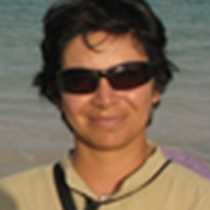Hood Island
Today we visited the oldest and the southern most island on the archipelago, and it was outstanding. Our first day of the year began on a white sandy beach with blue turquoise waters surrounding it; some went on a snorkeling outing to “Turtle islet” that looks just like a sea turtle hence its name.
Around “Turtle islet” one can find a great variety of fish, and lots of marine invertebrates, some were very lucky and saw a white-tipped reef shark resting at the bottom.
On the beach we had some juveniles Galápagos sea lions playing along the shore line with some of our young guests, and they were amazed to find how friendly and playful these juveniles were. Some of the kids built a nice sand castle and some sea lions claimed territory over it.
Some of our guests were also visited by some curious Hood mockingbirds, and lava lizards, both endemic to Hood Island.
During our afternoon excursion we had a wonderful time together as we visited the western side of Hood Island on Punta Suarez were lots of marine iguanas like this one on the picture are displaying their mating colors and their territorial behavior that includes head bobbing and aggressive postures that discourage all of their opponents.
We were surprised to find some Galápagos waved albatross around the cliffs of Hood even though they migrate from the island by December; apparently some of the young albatross are not ready yet to abandon the island.
Some of these albatrosses were displaying their mating dance; they gave us an incredible show that went for several minutes while some of the juveniles watched them, soon they will go to spend some time in front of the coasts of Peru; the albatrosses will come back to Hood island by March.
We encountered several little Nazca boobies and some of the Galápagos hawks were around them, perhaps waiting to take with them some of the unattended chicks.
Once aboard we had our departure dinner and we all enjoyed our time together in Galápagos.
Today we visited the oldest and the southern most island on the archipelago, and it was outstanding. Our first day of the year began on a white sandy beach with blue turquoise waters surrounding it; some went on a snorkeling outing to “Turtle islet” that looks just like a sea turtle hence its name.
Around “Turtle islet” one can find a great variety of fish, and lots of marine invertebrates, some were very lucky and saw a white-tipped reef shark resting at the bottom.
On the beach we had some juveniles Galápagos sea lions playing along the shore line with some of our young guests, and they were amazed to find how friendly and playful these juveniles were. Some of the kids built a nice sand castle and some sea lions claimed territory over it.
Some of our guests were also visited by some curious Hood mockingbirds, and lava lizards, both endemic to Hood Island.
During our afternoon excursion we had a wonderful time together as we visited the western side of Hood Island on Punta Suarez were lots of marine iguanas like this one on the picture are displaying their mating colors and their territorial behavior that includes head bobbing and aggressive postures that discourage all of their opponents.
We were surprised to find some Galápagos waved albatross around the cliffs of Hood even though they migrate from the island by December; apparently some of the young albatross are not ready yet to abandon the island.
Some of these albatrosses were displaying their mating dance; they gave us an incredible show that went for several minutes while some of the juveniles watched them, soon they will go to spend some time in front of the coasts of Peru; the albatrosses will come back to Hood island by March.
We encountered several little Nazca boobies and some of the Galápagos hawks were around them, perhaps waiting to take with them some of the unattended chicks.
Once aboard we had our departure dinner and we all enjoyed our time together in Galápagos.




